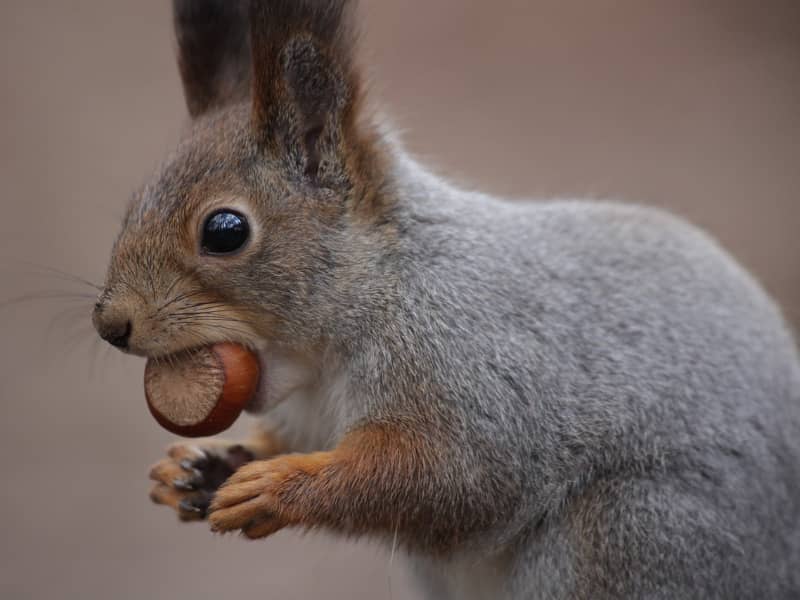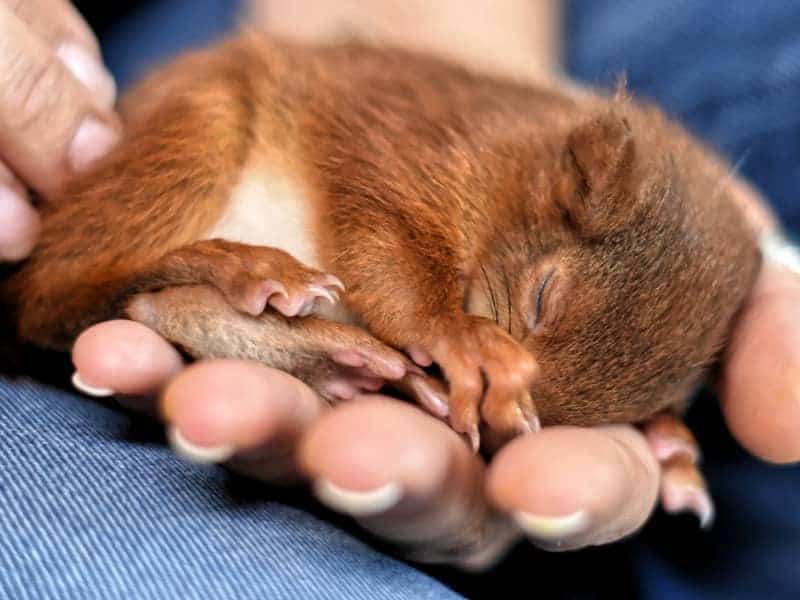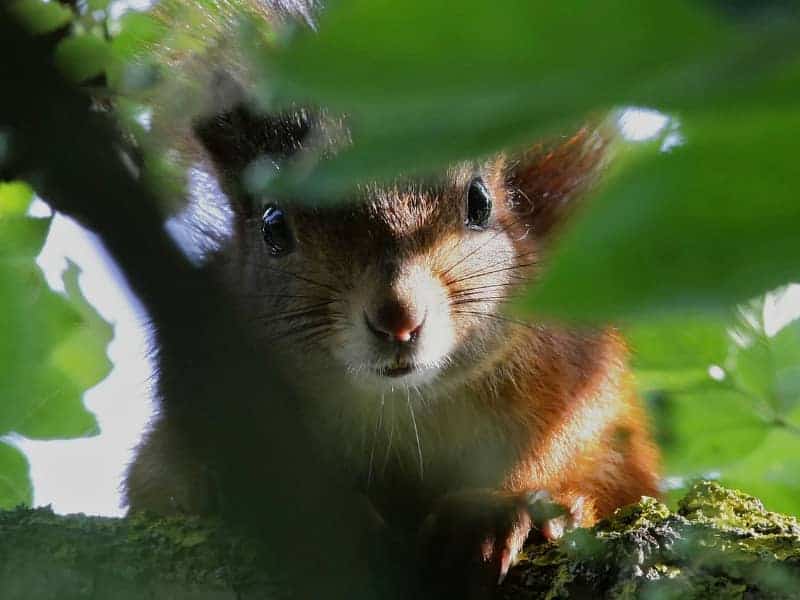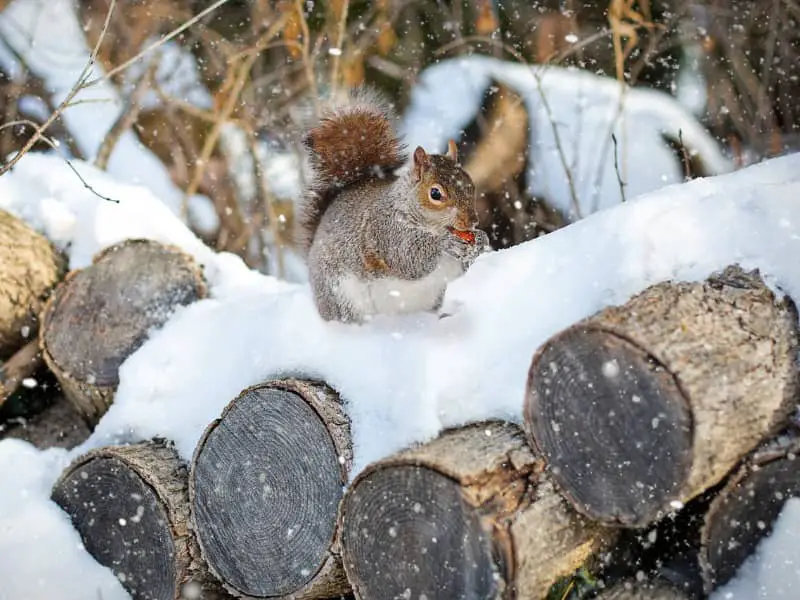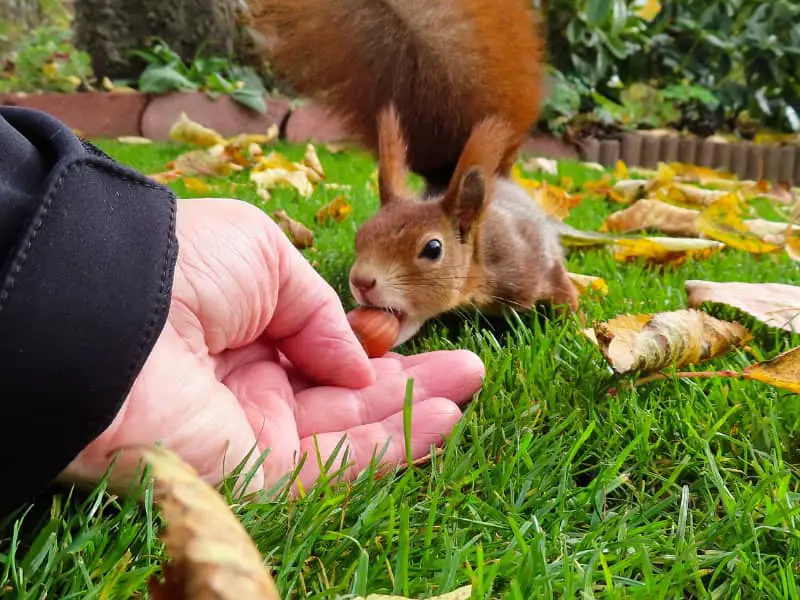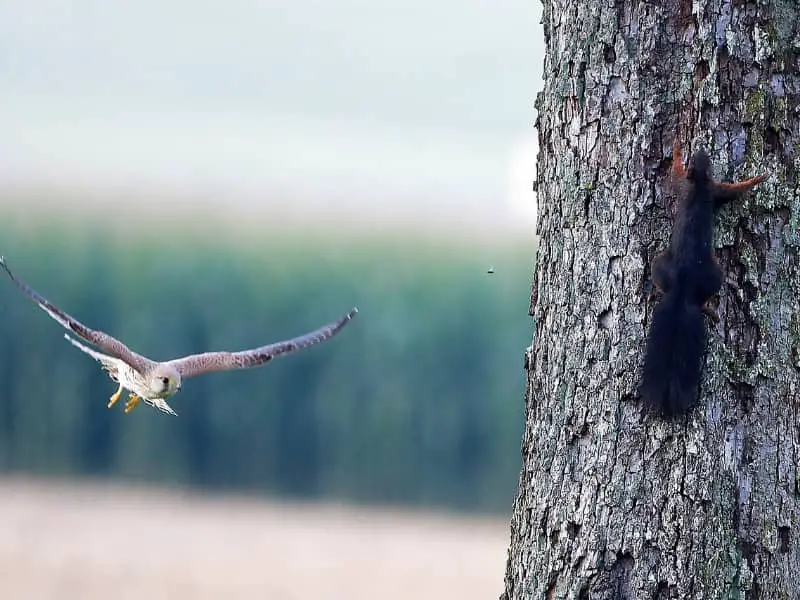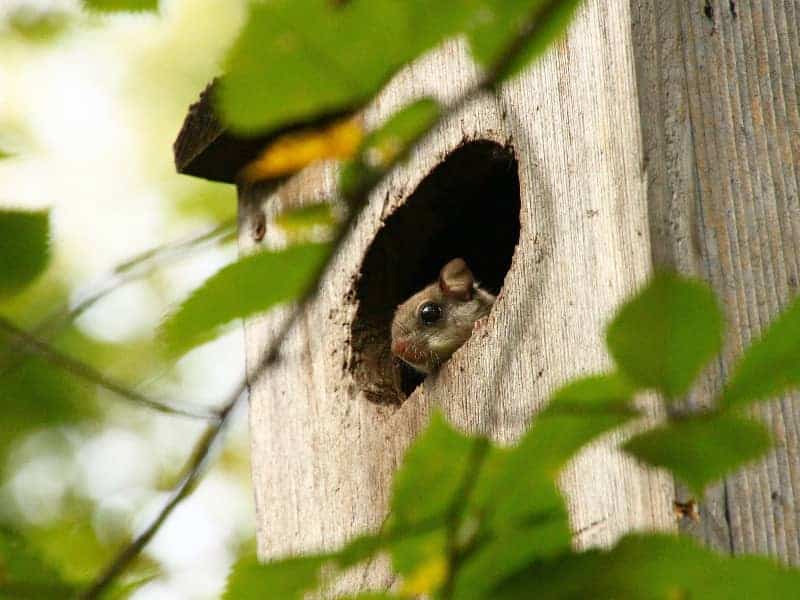
Flying squirrels
One of the most fascinating creatures cavorting high up in the treetops are flying squirrels. Their acrobatic flight maneuvers and mysterious way of life make them true superheroes of the animal world. Gleithorns, as they are properly called, are found in North America, Europe and Asia. In Europe, however, only in Finland, Estonia, Latvia and the north of Russia.
- Flying squirrels
- The fascinating anatomy of flying squirrels
- The hunt for the perfect flight path
- Flying squirrels: The masters of acrobatics
- The food of the flying squirrel
- Flying squirrels: Master of the treetops
- The home of flying squirrels
- The everyday life of flying squirrels
- Communication and social structure
- The relationship with man
- The future of flying squirrels
- Flying squirrels: Myth and reality
- Symbols of freedom and grace
- Conclusion: Flying squirrels
- The fascinating anatomy of flying squirrels
The fascinating anatomy of flying squirrels
To understand how these tiny mammals conquer the skies, we must first look at their unique anatomy. Flying squirrels belong to the gliding squirrel family and are distinguished by their special skin folds. These extend between the front and hind legs, forming a kind of flying membrane similar to the flying skin of bats.
This flying membrane is called a "patagium" and allows flying squirrels to swing from tree to tree and cover amazing distances. The patagium serves as a sail that increases lift during flight and allows the little creatures to outsmart gravity.
The hunt for the perfect flight path
Flying squirrels are true masters of navigating the skies. Before taking to the skies, they carefully scan their surroundings to find the ideal flight path. They look for trees that offer the best take-off and landing point and plan their route to cleverly avoid obstacles.
Their flying style resembles that of paper airplanes skillfully thrown by a gifted child. They skillfully glide in a downward arc, using their long tails as rudders to adjust direction. This fascinating style of flight is why many people do not believe in the existence of flying squirrels until they see them with their own eyes.
Flying squirrels: The masters of acrobatics
The flying skills of squirrels are not only impressive, but also extremely acrobatic. They can reach speeds of up to 50 km per hour while achieving slight differences in altitude of 50 or 100 m overcome. During the flight they often take tight turns and perform breathtaking stunts.
These little creatures are truly the acrobats of the air. Sometimes they even perform several flights in a row, swinging from one tree to the next platform. This spectacle is a true spectacle, which every Spectators fascinated.
The food of the flying squirrel
Flying squirrels are known not only for their flying abilities, but also for their unique diet. They are omnivores and feed on a variety of nuts, seeds, fruits, insects, and even bird eggs. Their flight-based lifestyle allows them to reach hard-to-reach food sources, giving them a distinct advantage.
In a world full of predators and prey, flying squirrels are also masters of camouflage. Their gray fur and ability to blend seamlessly into the treetops make them difficult to spot from a distance. This allows them to hide from potential threats and skillfully maneuver their way out of dangerous situations.
Flying squirrels: Master of the treetops
Welcome back to our exciting adventure in the world of flying squirrels! In this post, we'll take a closer look at their mysterious way of life and find out how they spend their days in the lofty heights of the treetops.
The home of flying squirrels
Flying squirrels are native to North America, primarily the forests of Canada and the United States. They prefer deciduous and mixed forests where there are enough tall trees to display their extraordinary flying skills. There they also find sufficient food and hiding places to protect themselves from predators.
During the cold months of the year, flying squirrels retreat to their nests, which they build from leaves, twigs and other materials in tree cavities or nests. These nests provide them with warmth and protection from the winter elements.
The everyday life of flying squirrels
The life of a flying squirrel is anything but boring. Every day they are busy searching for food, perfecting their flying skills and defending their territories. Early in the morning they start their hunt for nuts, seeds and fruits.
In autumn, when the trees are rich in nuts and seeds, flying squirrels prepare for winter. They gather and hide supplies in tree cavities and under tree bark to prepare for the barren months.
During the day, flying squirrels spend much of their time gliding from tree to tree. They monitor their territory, looking for possible dangers and skillfully avoiding the predator-like eyes of birds of prey and other hunters.
Communication and social structure
Flying squirrels are usually solitary and lead a fairly independent life. Their communication is mainly through body posture, scent and some calls. If they discover conspecifics in their territory, short encounters or fights may occur.
During the mating season, which usually occurs in late winter or spring, flying squirrels become more gregarious. Males vie for the favor of females and perform imposing flight maneuvers to demonstrate their abilities.
The relationship with man
Flying squirrels are usually shy creatures and avoid direct contact with humans. Nevertheless, they are sometimes seen in rural areas, where they are considered fascinating neighbors by the inhabitants.
It is important to note that flying squirrels are wild animals and should not be kept as pets. They have special needs and a unique lifestyle that makes it difficult for them to thrive in a human environment.
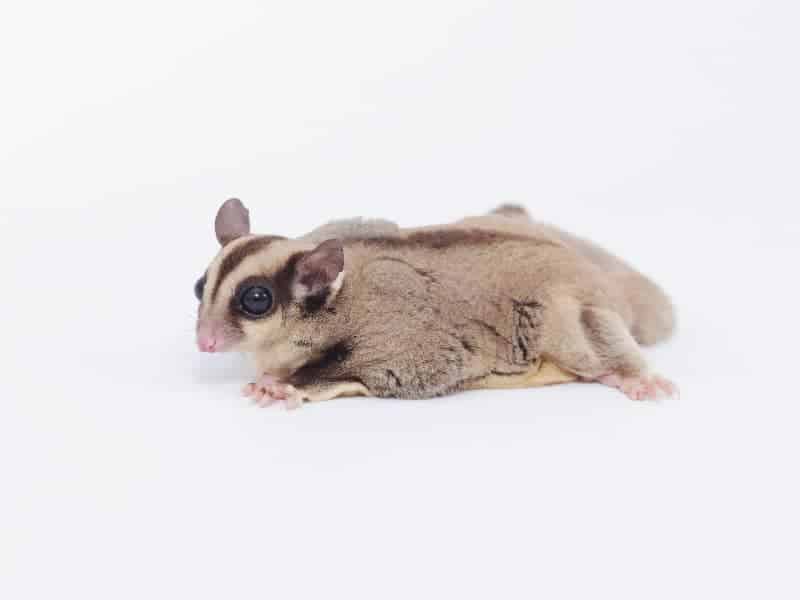
The future of flying squirrels
Unfortunately, flying squirrels are now affected by several man-made threats. Their habitat is shrinking due to deforestation and the spread of urban areas. In addition, they are often victims of traffic accidents when they try to cross roads.
Preserving their habitat and creating protected areas are crucial to ensuring the survival of these fascinating creatures. By consciously working to protect nature and its inhabitants, we can help ensure that flying squirrels continue to enrich our forests in the future.
Flying squirrels: Myth and reality
Welcome back to our exciting adventure into the world of flying squirrels! In this post we will look at some fascinating facts and myths surrounding these extraordinary creatures.
Myth 1: Flying squirrels are real birds
Although their impressive gliding ability makes them look like little flying artists, flying squirrels are not birds. They belong to the order of rodents and have many things in common with their non-flying relatives.
The patagium, their flight membrane, is their most characteristic feature that allows them to glide. However, this unique feature clearly distinguishes them from the feathered inhabitants of the air.
Myth 2: Flying squirrels fly like birds
Flying squirrels actually glide from tree to tree instead of flying by actively flapping their wings like birds. Their flight technique is more like the gliding of a paper airplane than the real flight of birds.
By cleverly using their limbs and tail as control surfaces, they can influence their flight path and perform impressive maneuvers in the air.
Myth 3: Flying squirrels can fly infinitely far
Although their gliding ability is impressive, flying squirrels have their limits. As a rule, they can cover distances of up to 50 meters before they have to land on a tree again.
Their flight distance depends on several factors, including the altitude from which they depart, wind conditions, and the availability of trees as landing sites.
Myth 4: Flying squirrels can be found everywhere
Although flying squirrels are native to North America, they are not found everywhere. They prefer certain habitats, especially forests with sufficiently tall trees and abundant food.
Loss of their natural habitat due to deforestation and the effects of climate change could threaten their populations and limit their distribution.
Myth 5: Flying squirrels are dangerous
Flying squirrels are usually harmless and avoid contact with humans. They are shy creatures that are usually found only in remote forest areas.
As long as they are left alone and their habitat is respected, they will not pose a threat. It is important not to disturb or feed wild animals to ensure their natural behaviors and protection.
Symbols of freedom and grace
The mysterious flying squirrels remain fascinating creatures that impress us with their grace and flying skills. As masters of the treetops, they help enrich the beauty of our forests.
Their unique ability to glide seemingly weightlessly from tree to tree reminds us that our world is full of wonders to be discovered and protected.
We should make a conscious effort to preserve the natural habitats of flying squirrels and enjoy the diversity of wildlife our planet has to offer.
Flying squirrels: The ambassadors of the forest
Welcome back to our exciting adventure into the fascinating world of flying squirrels! In this post we will look at the importance of these little creatures as ambassadors for the protection of our forests.
The role of flying squirrels in the ecosystem
Flying squirrels play an important role in the forest ecosystem. As omnivores, they help spread plant seeds by transporting nuts and seeds from one place to another.
As they glide from one tree to another, they can deposit seeds in different parts of the forest, which contributes to the regeneration and rejuvenation of the tree population. They are, so to speak, the gardeners of the forest and support the biodiversity in their environment.
The balance of nature
Balance in an ecosystem is crucial to the well-being of all the creatures living in it. Flying squirrels keep the population of insects and small rodents in check by occasionally including them in their food chain.
By decimating certain prey, they help maintain the natural balance and promote the growth of plants that would otherwise be eaten by these animals.
Ambassador for forest conservation
Flying squirrels are not only fascinating creatures, but also important ambassadors for the protection of our forests. Their life high up in the treetops shows us the diversity and beauty of nature and reminds us how valuable and worth protecting our natural habitat is.
By working to protect the habitats of these little flying artists, we are not only helping the flying squirrels themselves, but also a variety of other animal and plant species that depend on intact forest areas.
The challenges for forest conservation
Forests are unfortunately facing various challenges nowadays. Deforestation, forest fires, climate change and pollution threaten the habitats of many species, including flying squirrels.
It is vital that we make a conscious effort to preserve our forests and take sustainable measures to protect them. This can be done by supporting conservation organizations, reforestation projects and making conscious choices in our everyday lives.
Our responsibility as part of nature
As part of nature and as inhabitants of this planet, we have a responsibility to protect and preserve our environment. We should make a conscious effort to preserve biodiversity by respecting and protecting our natural habitats.
The fascinating flying squirrels remind us that we can live in harmony with nature if we respect it and appreciate its beauty. By working to protect our forests and their inhabitants, we make a valuable contribution to the preservation of this unique planet.
Conclusion: Flying squirrels
The flying squirrels are not only fascinating creatures, but also important ambassadors for the preservation of our forests. Their acrobatic flying skills and their contribution to the spread of plant seeds make them true heroes of the animal world.
By working to protect their habitats and making a conscious commitment to conservation, we can help ensure that the fascinating flying squirrels and many other species continue to enrich our forests in the future.
Author

-
Garden animal - A life with nature
Welcome to my animal blog! My name is Dirk and I am happy to take you on my journey through the fascinating world of animals and gardening.
Born 54 years ago, I have had an insatiable curiosity for the animal world around me since childhood. Although I have moved professionally in other industries, my true passion has always been animals and nature. It is remarkable how a small garden has become such an important part of my life.
Many of my fondest memories are associated with the animals that share our home. Whether it's the curious squirrels that scurry across the trees in the morning, the colorful variety of birds that visit our feeders, or the busy bees and butterflies that pollinate our flowers, every moment with them is invaluable to me.
This blog is my contribution to share my experiences, discoveries and insights with like-minded people. Here I will share stories of unforgettable encounters with animals, give tips on gardening and creating wildlife-friendly habitats, and take you on my journeys through nature.
Thank you so much for being here!
Cordial,
Dirk aka garden animal
Last posts
- 27. February 2024PetsVeganes Hundefutter – Grün und Gesund?
- 18. January 2024ChickensOregano für Hühner
- November 27, 2023HamsterDiurnal hamsters
- November 24, 2023HamsterHamster hammock

